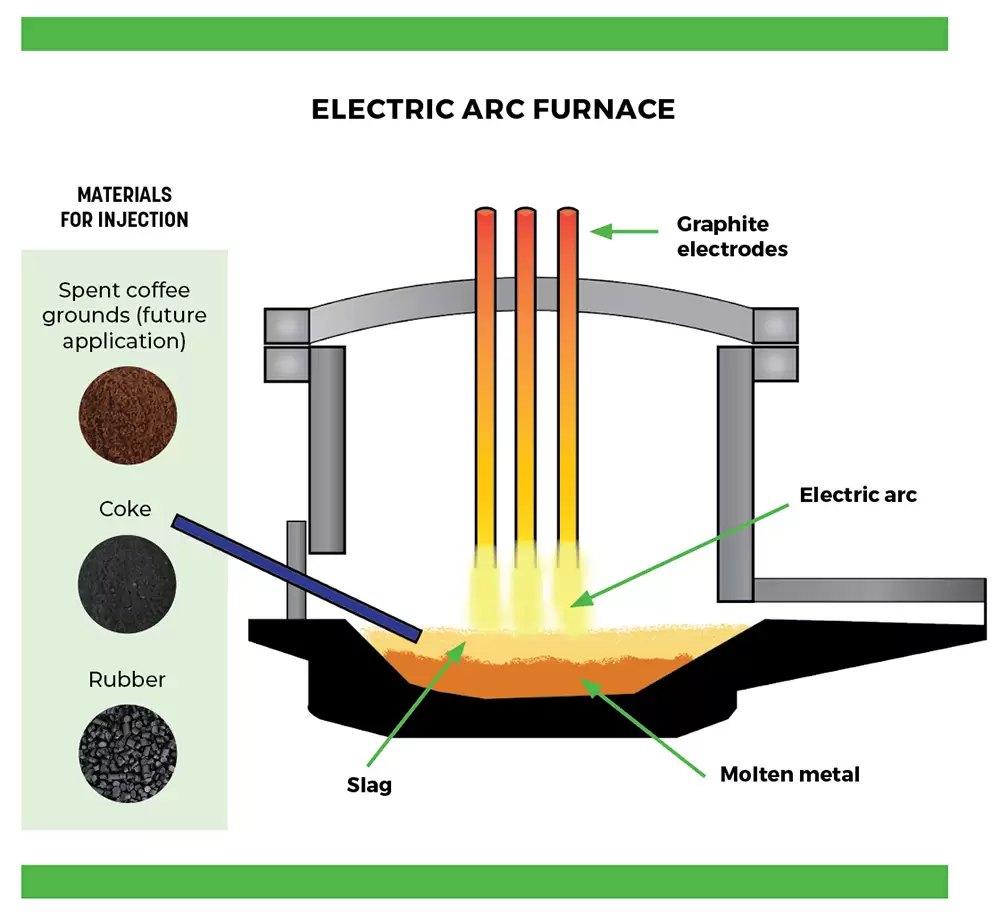Latest news
Read the latest news from the Centre for Sustainable Materials Research and Technology

Create Magazine has published a series of stories about UNSW SMaRT Centre's next generation of research into its patented Green SteelTM Polymer Injection Technology that seeks to fully replace coke and coal from steel making with waste resources and to liberate hydrogen to achieve even greater energy efficiency.
See below an excerpt below from the Create story, which followed this story from Create about how engineers are enabling net zero which also featured Veena and Green Steel.
By Chris Sheedy and Create Digital
In the lead up to UNESCO’s World Engineering Day for Sustainable Development (4 March), create is presenting a series of discussions with experts, revealing the evidence — including major innovations and projects, challenges and solutions, opportunities and risks — that proves engineers in Australia are leading the way to a better future.

Professor Veena Sahajwalla HonFIEAust, University of New South Wales.
The engineering challenge in the production of green steel has been delivering hydrogen to an electric arc furnace in a way that steelmakers can continue to produce efficiently.
“For us, the challenge has always been about how you enable a steelmaker to use hydrogen in the process,” said Engineers Australia Honorary Fellow Professor Veena Sahajwalla HonFIEAust, founder of the Centre for Sustainable Materials Research and Technology (SMaRT) at the University of New South Wales.
“Our polymer injection technology uses rubber tyres, a rich source of hydrogen, in furnaces. It balances different chemical reactions to make the hydrogen work for us, liberating hydrogen from the tyres and enabling efficient steel production.”
It’s a win-win approach. Hydrogen does not have to be produced outside the process, a previously problematic waste product becomes a valuable resource, and the environment benefits.
Right now, the polymer injection technology allows a partial replacement of coking coal in electric arc furnaces. That was the goal of the project’s first phase.
Sahajwalla, her team, and their commercial partner, Molycop, have now been funded to find ways to introduce a greater amount of tyre rubber into the process.
“We will also be working with Molycop to take the green steel technology to the world,” she said.

And it is no longer only about using tyre rubber as fuel. Sahajwalla’s work is now looking into using waste coffee for the same purpose.
Another new challenge is to transfer the green steel technology from the electric arc furnace environment to the blast furnace environment. It’s all very well to make green steel from scrap materials, Sahajwalla said, but how, for example, does a company like BlueScope bring the process into its existing infrastructure?
“The answer, of course, is that we have to find out,” she said. “With our recent funding, some of these companies are likely to start on their own green steel journey.
“We’re not expecting companies to invest in whole new assets, but rather to take our IP and begin to customise the solution for their own purposes.”